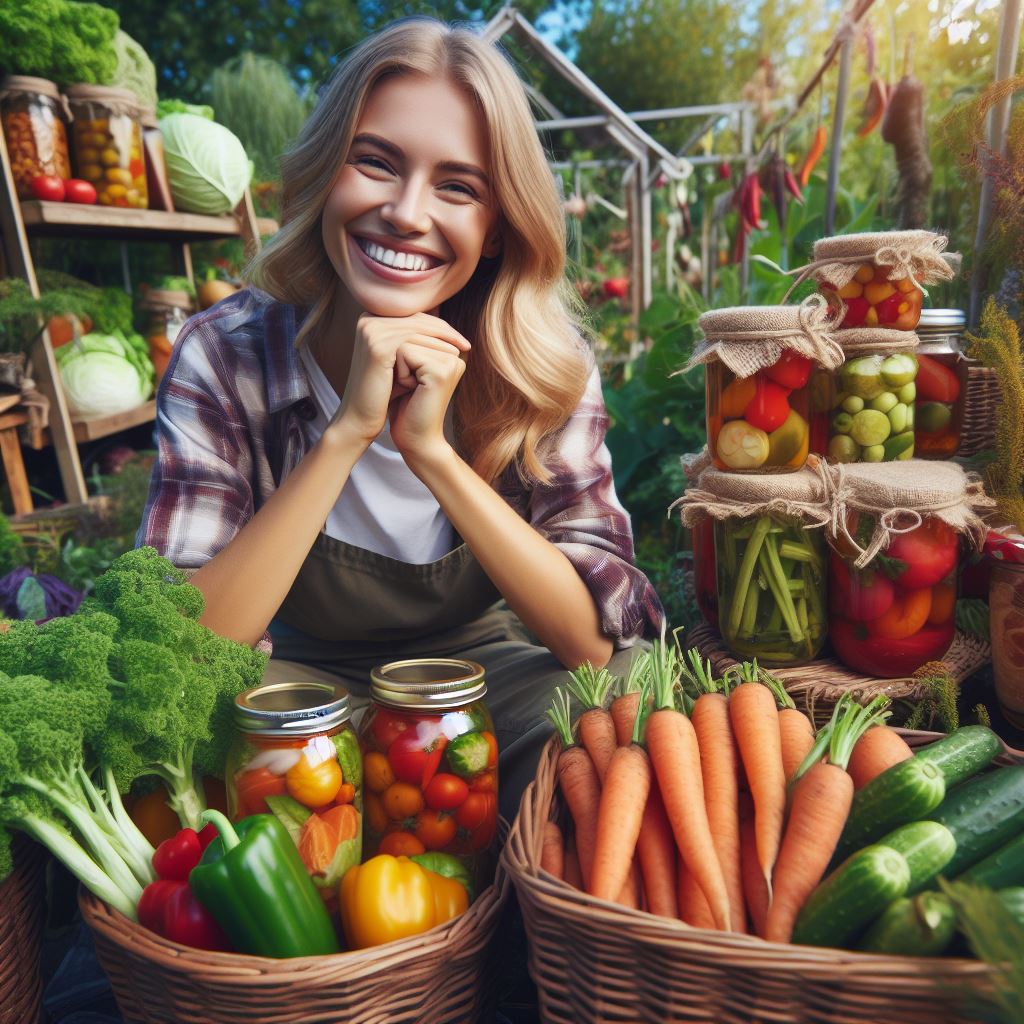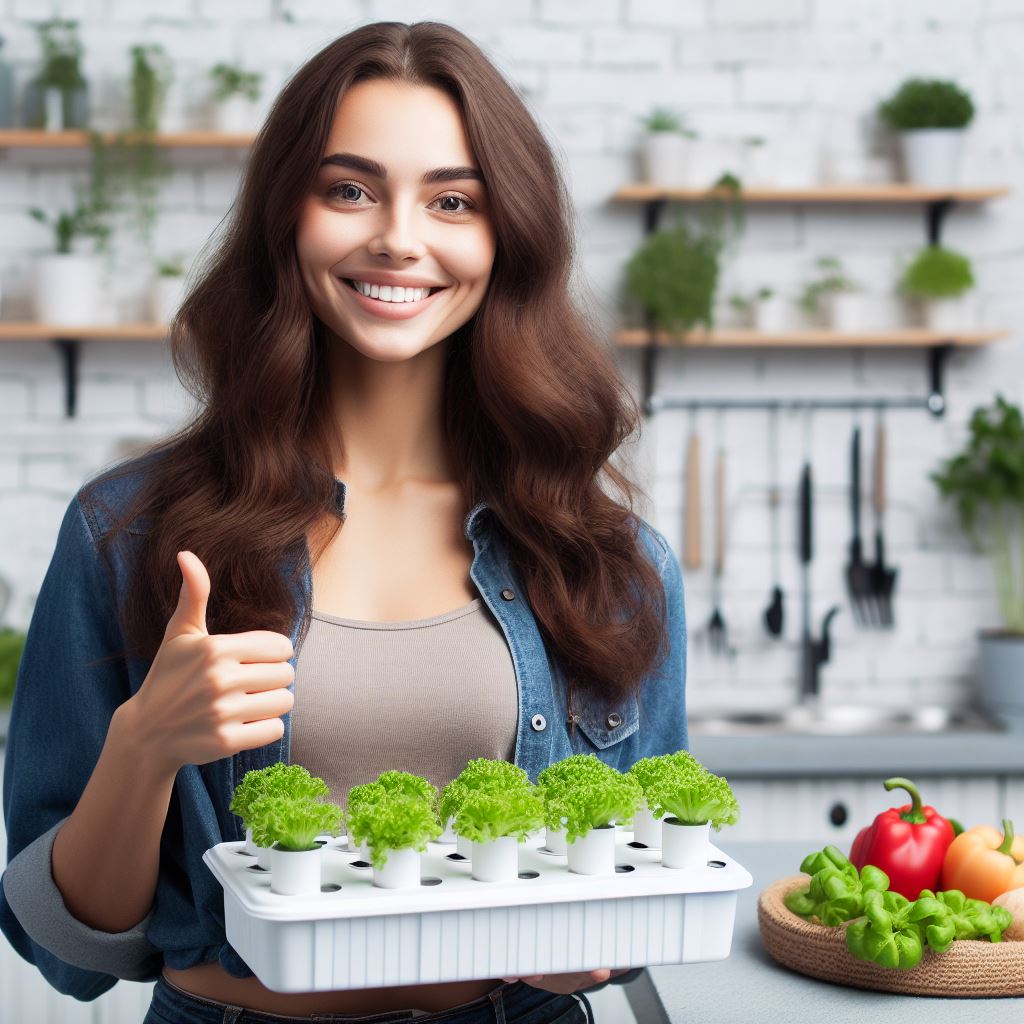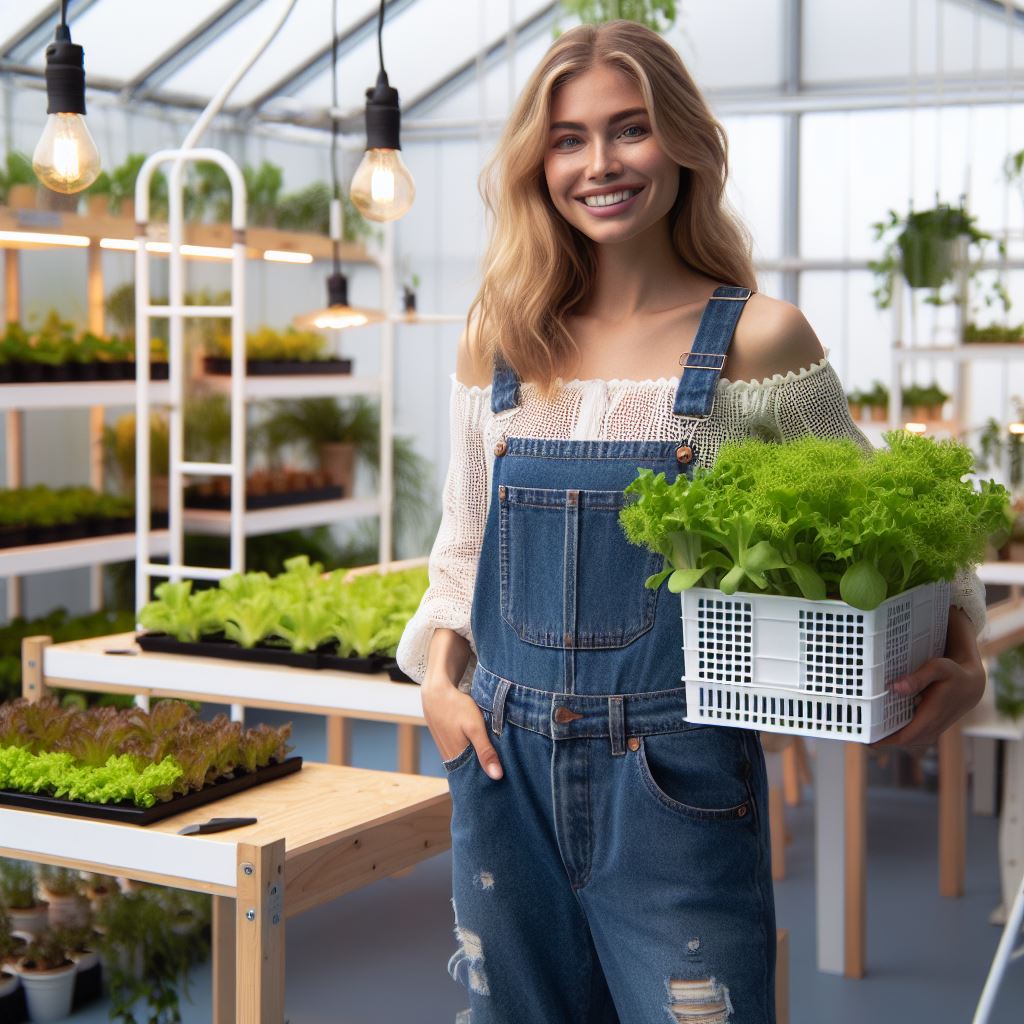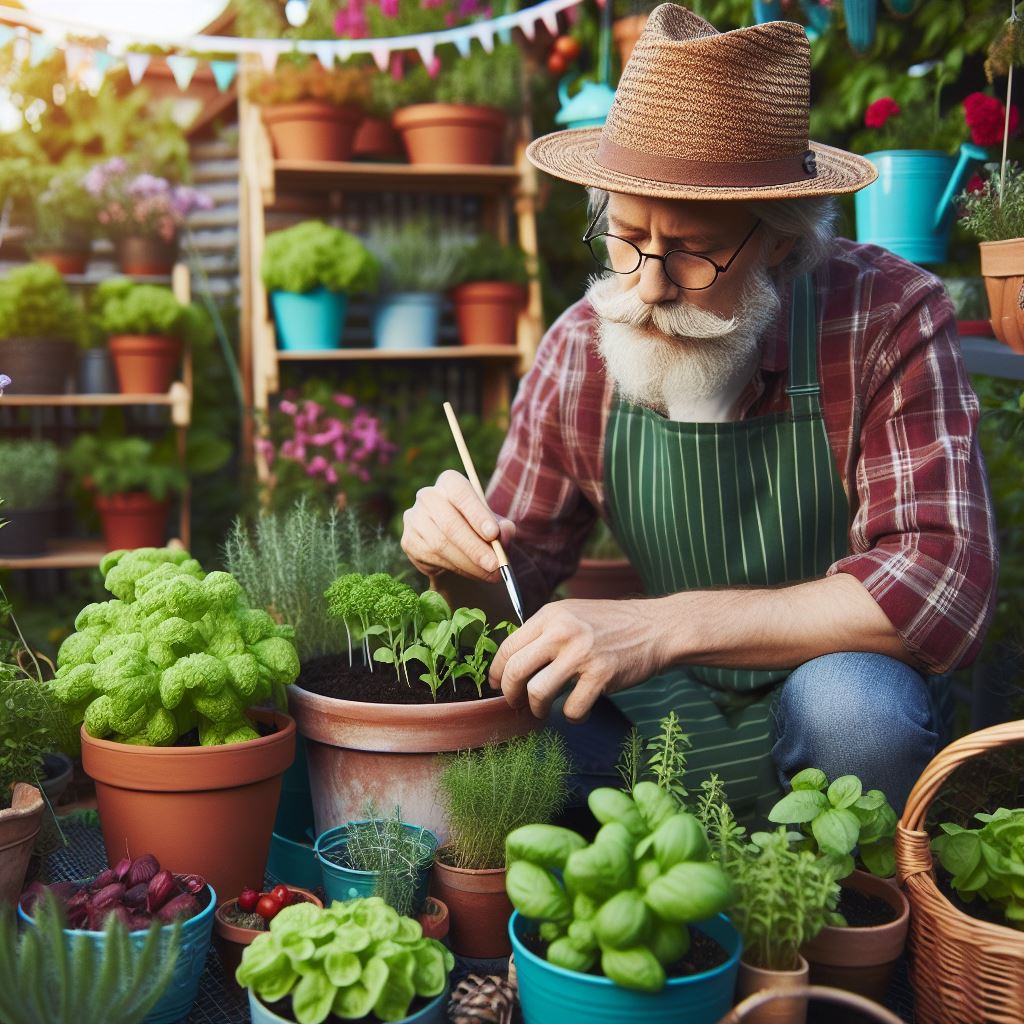Introduction
The concept of container gardens
Container gardening has revolutionized the way people connect with nature in urban environments.
With limited space and lack of traditional gardens, container gardens have become the ultimate solution.
In urban areas, container gardens have gained popularity due to their ability to beautify small balconies and rooftops.
But the benefits of container gardening go beyond aesthetics.
Benefits of container gardening in urban areas
By utilizing pots and containers, urban dwellers can make use of every inch of their limited spaces.
Every plant, herb, or flower takes on a new life when placed in a container.
They can be arranged in different heights and shapes, creating a visually appealing oasis within concrete jungles.
Container gardens not only add greenery to urban landscapes but also improve air quality by filtering pollutants.
Now, imagine having the opportunity to create your own perfect container garden in just 5 simple steps.
Whether you’re a seasoned gardener or a beginner, these steps will guide you towards achieving a thriving, bountiful oasis.
From choosing the right containers and soil to picking the perfect plants and providing adequate care, the process will feel effortless.
Get ready to transform your urban space into a sanctuary of greenery and tranquility.
Join us on this journey to create your own urban oasis with a perfect container garden.
Let’s dive in and unleash your inner gardener in the most practical and enjoyable way.
Step 1: Selecting the Right Containers
Importance of Containers in Container Gardening
- Containers are crucial for container gardening as they house the plants and provide necessary support.
- They allow you to create a mini garden even if you have limited outdoor space.
- Containers also offer flexibility by allowing you to easily move your plants if needed.
Tips on Choosing the Appropriate Containers based on Plant Needs and Space Constraints
- Consider the size and growth habit of the plants you wish to grow.
- Ensure the containers have proper drainage holes to prevent waterlogging and root rot.
- Assess the available space and choose containers that fit well and complement the overall aesthetic.
- Opt for lightweight containers if you plan to move them often.
- Consider the material of the containers, such as ceramic, plastic, or wood, based on durability and aesthetics.
- If you have space constraints, vertical gardening using hanging planters or wall-mounted containers can be a great solution.
Different Types of Containers Available and Their Pros and Cons
Plastic Containers
- Pros: Lightweight, affordable, and available in various sizes and designs.
- Cons: Can deteriorate with exposure to sunlight and may not provide optimum insulation for plant roots.
Ceramic or Clay Pots
- Pros: Provide good insulation, visually appealing, and suitable for various plant types.
- Cons: Heavy, can break easily, and retain more moisture, which may lead to overwatering.
Fabric Pots
- Pros: Promote better aeration and drainage, lightweight, and foldable for easy storage.
- Cons: Can dry out quickly and may require more frequent watering in hot climates.
Hanging Baskets
- Pros: Save space, add visual interest, and allow plants to cascade gracefully.
- Cons: Can be challenging to water and may require extra care to avoid soil erosion.
Troughs and Window Boxes
- Pros: Perfect for herbs and small vegetables, add charm to windows and railings.
- Cons: Limited space for root growth, may dry out quickly, and require frequent watering.
Self-Watering Containers
- Pros: Provide a constant water supply, reduce watering frequency, and prevent waterlogging.
- Cons: Expensive, limited design options, and require careful monitoring of water levels.
Recycled Containers
- Pros: Environmentally friendly, cost-effective, and give a unique touch to your garden.
- Cons: May not have proper drainage holes, require modifications, and can deteriorate over time.
Remember, whether you choose traditional pots or experiment with unconventional containers, ensure they meet the specific needs of your plants and fit your gardening space.
Transform Your Agribusiness
Unlock your farm's potential with expert advice tailored to your needs. Get actionable steps that drive real results.
Get StartedThe right containers will contribute to the success and beauty of your container garden.
Read: Eco-Friendly Gardening: Sustainable Practices
Step 2: Choosing the Ideal Plants
Achieving a perfect container garden requires careful selection of suitable plants.
By choosing the right plants, you can ensure a thriving urban oasis.
Importance of Selecting Suitable Plants for Container Gardening
Before diving into the world of container gardening, it is crucial to understand the importance of selecting suitable plants for this specific environment.
Unlike traditional gardens, container plants have limited space and resources.
This means that not all plants will thrive in containers, and choosing the wrong ones can result in disappointment and frustration.
Therefore, take the time to research and select plants that are well-suited for container growth.
Factors to Consider When Choosing Plants
When it comes to choosing plants for your container garden, several factors should be taken into consideration.
First, consider the sunlight requirements of the plants.
Some plants prefer full sun, while others thrive in partial shade.
Ensure that your chosen plants will receive the necessary amount of sunlight in your specific gardening location.
Next, evaluate the available space for your container garden.
Plants vary in size, and some may outgrow their containers if not given enough room for their roots to grow.
Take into account the eventual size of the plants and choose containers that can accommodate their growth.
Additionally, consider the climate and weather conditions in your area.
Some plants are more resilient and can tolerate extreme temperatures, while others require more temperate conditions.
Choose plants that are suitable for your specific climate to support their growth and overall health.
Plant Suggestions that Thrive Well in Container Gardens
Here are some plant suggestions that are known to thrive well in container gardens:
- Herbs: Basil, thyme, rosemary, and parsley are all excellent choices for container gardens. They require minimal space and can add both beauty and flavor to your urban oasis.
- Succulents: These plants are perfect for container gardening, as they have adapted to survive in harsh environments with limited water availability. Try varieties such as Echeveria, Sedum, and Aloe.
- Dwarf Citrus Trees: If you have a larger container and access to ample sunlight, consider planting a dwarf citrus tree. They provide both aesthetic appeal and the possibility of harvesting your own fruit.
- Salad Greens: Lettuce, kale, spinach, and arugula can all be grown in containers and are perfect for creating a mini salad garden right in your backyard.
- Flowers: To add color and vibrancy to your container garden, consider planting varieties like marigolds, petunias, or pansies. These flowers thrive well in containers and can instantly uplift the aesthetics of your urban space.
Remember, these are just a few suggestions, and there are countless other plant options available for container gardening.
Do further research and experiment to find the perfect plants for your specific space and preferences.
By choosing the ideal plants for your container garden, you are setting yourself up for a successful and visually pleasing urban oasis.
Take the time to consider all the factors and select plants that will thrive in this unique gardening environment. Happy planting!
Read: Balcony Farming: Urban Organic Strategies
Showcase Your Farming Business
Publish your professional farming services profile on our blog for a one-time fee of $200 and reach a dedicated audience of farmers and agribusiness owners.
Publish Your Profile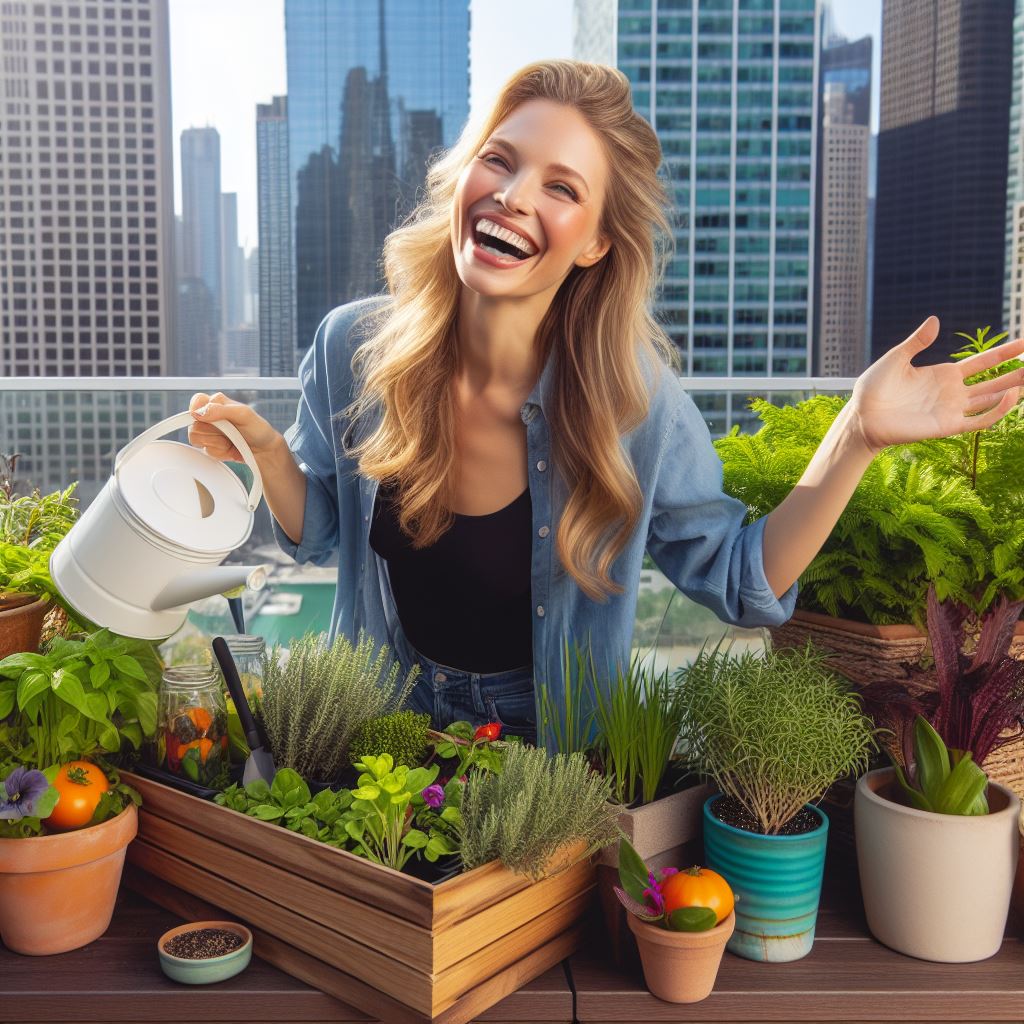
Step 3: Preparing the Soil and Planting
Significance of soil preparation for container gardens
When it comes to container gardening, soil preparation is crucial for the success of your plants.
The right soil provides essential nutrients, proper drainage, and a healthy environment for roots to grow.
- Provides nutrients: Good soil contains the necessary nutrients that plants need to thrive. It sustains their growth and ensures they receive a balanced diet.
- Improves drainage: The soil should have good drainage, allowing excess water to flow out of the container. This prevents waterlogging, which can lead to root rot or other water-related diseases.
- Supports root growth: Adequate aeration is essential for root growth. Well-prepared soil aids in oxygenation, helping roots develop and spread efficiently.
- Prevents soil compaction: Loose and well-drained soil prevents compaction, allowing roots to penetrate easily and absorb nutrients effectively.
Guidelines on selecting and preparing the appropriate soil mix
To select and prepare the best soil mix for your container garden, follow these guidelines:
- Container size: Choose a pot that accommodates the plant’s size and allows for proper root development. This ensures the soil has enough space to provide nutrients and drainage.
- Soil mix components: Create a well-balanced soil mix by combining components like garden soil, compost, peat moss, and perlite. These ingredients provide nutrients, improve drainage, and retain moisture.
- Proportion: Use a combination of 60% garden soil, 20% compost, 10% peat moss, and 10% perlite. Adjust the proportion as needed depending on the specific requirements of your plants.
- Sterilization: Sterilize the soil mix to eliminate disease-causing organisms, insects, and weed seeds. Heat the soil in an oven at 180°F for 30 minutes to kill any unwanted pests.
Proper planting techniques for container gardening
Follow these proper planting techniques to ensure the success of your container garden:
- Preparing the container: Fill the container with the prepared soil mix, leaving enough space for the plant’s roots to comfortably fit.
- Plant selection: Choose plants suitable for container gardening based on their size and sun requirements. Consider mixing different plant varieties to create an aesthetically pleasing arrangement.
- Digging the hole: Dig a hole slightly larger than the plant’s root ball. Gently remove the plant from its nursery container and place it into the hole.
- Positioning the plant: Position the plant at the same depth it was in the nursery container. Avoid burying the stem too deep or exposing the roots.
- Backfilling the hole: Fill the hole with the prepared soil mix, ensuring the roots are well-covered. Gently press the soil around the plant to remove any air pockets.
- Watering: After planting, thoroughly water the container to help settle the soil and ensure proper root establishment. Water as needed based on the plant’s specific watering requirements.
- Mulching: Apply a layer of organic mulch around the plant to help retain moisture and reduce weed growth.
Proper soil preparation and planting techniques are fundamental for creating a successful container garden.
By providing the right soil mix and following the appropriate planting guidelines, you can ensure healthy plant growth and beautiful urban oasis.
Read: Pollinator-Friendly Gardening: Bees & More
Discover More: Tiny Space, Huge Taste: Easy-to-Grow Herbs
Step 4: Watering and Maintenance
The essential aspect of watering in container gardens:
- Water is crucial for the health and vigor of plants in container gardens.
- Container plants have limited soil volume, which means they rely on us for proper hydration.
- Watering ensures plants receive essential nutrients and aids in the prevention of wilting.
Tips for properly watering container plants
- Check the moisture level by sticking your finger about an inch into the soil.
- Water only when the top few inches of the soil feel dry to avoid overwatering.
- Use a watering can or a garden hose with a gentle nozzle to avoid damaging delicate plants.
- Water slowly and evenly, allowing the water to penetrate the entire root zone.
- Ensure thorough watering by allowing water to drain out from the drainage holes at the bottom of the container.
- Avoid wetting the foliage; this can lead to the development of fungal diseases.
Other maintenance tasks for container gardens
- Fertilizing: Feed your plants regularly with a balanced, water-soluble fertilizer according to the package instructions.
- Pruning: Trim back overgrown or dead branches to encourage bushier growth and maintain the desired shape.
- Pest control: Regularly inspect plants for any signs of pests or diseases, and take immediate action if necessary.
- Remove dried or yellowing leaves to promote overall plant health and aesthetics.
- Rotate containers periodically to ensure all sides of the plants receive sunlight evenly.
Proper watering and other maintenance tasks are vital for the longevity and success of your container gardens.
By giving your plants the attention they need, you can create a thriving urban oasis right at your doorstep.
Remember, container gardens require more care and attention than in-ground gardens due to their limited soil volume.
With these tips, you can keep your plants healthy and beautiful throughout the growing season.
Read: DIY Organic Fertilizers: Easy Recipes
Step 5: Placement and Design
A well-designed container garden not only adds beauty to your urban oasis but also provides a sense of tranquility and serenity.
In this final step, we will guide you on how to creatively design your container gardens, consider the location and placement of containers for optimal growth, and provide ideas for enhancing their visual appeal through accessories and arrangements.
Creative Design
Designing your container garden is an opportunity to showcase your creativity and personal style.
Think outside the box and experiment with different combinations of plants, colors, and textures. Consider the following tips:
- Choose a focal point: Select a standout plant or decorative object that will serve as the centerpiece of your container garden.
- Create height variation: Use plants of different heights to add dimension and visual interest.
- Play with colors: Combine plants with complementary or contrasting colors to create eye-catching displays.
- Add texture: Mix plants with varying leaf shapes and textures to create an intriguing visual appeal.
- Consider seasonal arrangements: Change your container garden’s design according to the season to keep it fresh and interesting.
Location and Placement
When it comes to container gardens, location is key.
Choosing the right spot for your containers will ensure the optimal growth and health of your plants. Consider the following factors:
- Sunlight exposure: Most plants thrive in direct sunlight, so place your containers in areas with at least six hours of sunlight per day.
- Wind protection: Protect your plants from strong winds by placing your containers against sturdy walls or using windbreakers.
- Accessibility: Ensure easy access to your container garden for watering, pruning, and maintenance.
- Drainage: Make sure your containers have proper drainage to prevent waterlogging and root rot.
- Size considerations: Take into account the eventual size of your plants and choose containers that provide enough space for their growth.
Enhancing Visual Appeal with Accessories and Arrangements
A container garden can be further enhanced by incorporating accessories and arranging the containers in an aesthetically pleasing manner.
Consider the following ideas:
- Use decorative pots: Opt for stylish pots that complement the overall design and theme of your container garden.
- Add trellises or stakes: Incorporate trellises or stakes to support climbing plants and add vertical interest.
- Introduce water features: Include a small fountain or pond within your container garden to create a soothing ambiance.
- Include seating areas: Place a garden bench or chairs near your container garden to create a peaceful retreat.
- Experiment with pathways: Arrange your containers in a way that forms inviting pathways within your urban oasis.
Remember, designing and placing your container garden should be a fun and creative process.
Let your imagination soar and create an urban oasis that reflects your unique style and provides a refreshing escape in the midst of the bustling city.
Conclusion
City living often means limited access to gardening spaces.
Yet container gardening enables urbanites like you to cultivate bountiful blooms and edibles right on your balcony, patio, or doorstep.
Compact and transportable, container gardens provide nature’s beauty and bounty in small doses for those with limited square footage.
Perfect for urban oases, container gardening offers multiple advantages over traditional in-ground gardening.
You can control the soil quality, move plants to capture optimal sunlight, and cover or protect them during extreme weather.
With just five simple steps that this article will detail—choosing appropriate containers, picking the right soil mix, selecting suitable plants for containers, proper watering and fertilization, and creative styling tips—you’ll unlock the secret to growing a gorgeous and thriving container garden anywhere.
Whether you have a tiny apartment balcony or larger deck, let’s explore how container gardening makes urban paradises possible.

